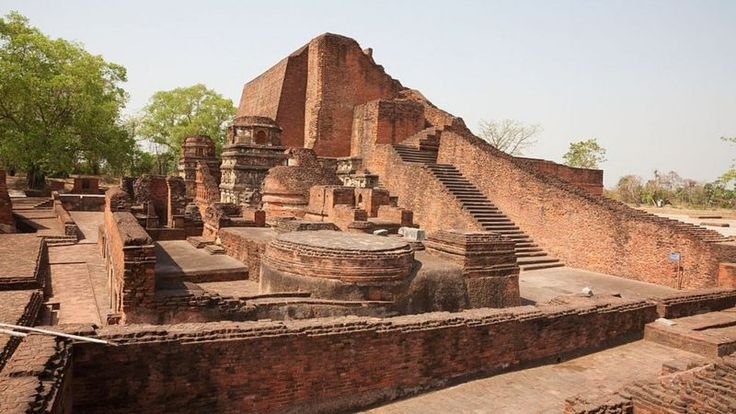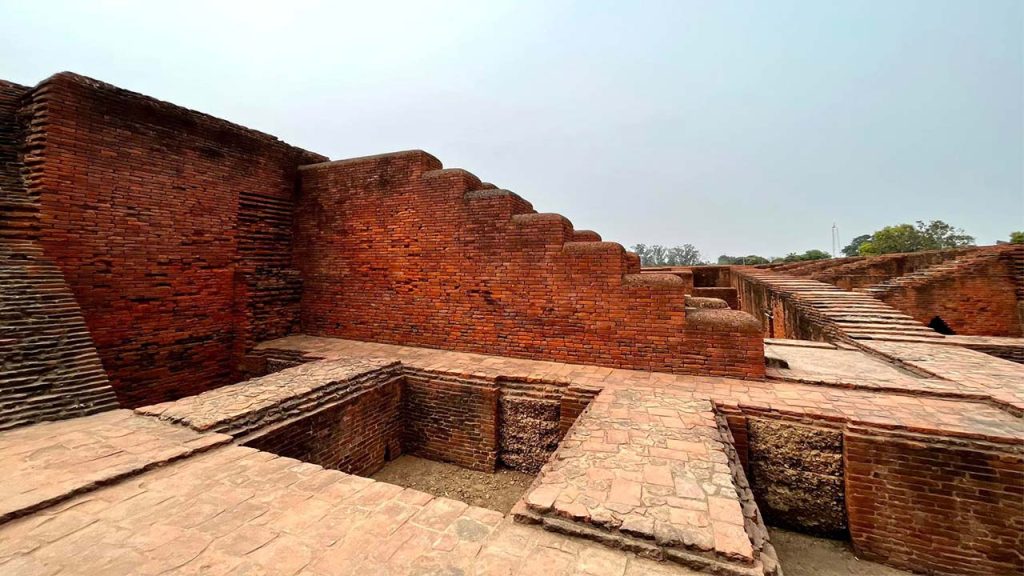An Icon of Ancient Scholarship

Dharmaganja was the celebrated library of Nalanda University, renowned in its time as the repository of vast amounts of knowledge. Known as the 'Treasury of Truth,' this library was not merely a collection of texts but a vibrant center for academic and spiritual inquiry. Established as part of one of the world’s first residential universities in India, Dharmaganja served as the beating heart of an intellectual metropolis that attracted scholars from far and wide[1][8].
Architectural Grandeur and Structure

The library was organized into three magnificent multi-storeyed buildings: Ratnasagara (Ocean of Jewels), Ratnodadhi (Sea of Jewels), and Ratnaranjaka (Jewel-adorned). Ratnodadhi, in particular, is noted for its nine-storey structure, designed to house thousands of manuscripts meticulously organized by discipline. This systematic approach to preserving knowledge was ahead of its time, with texts arranged not simply in a chronological order but by subjects such as Buddhist philosophy, astronomy, medicine, grammar, and logic[2][5][9]. The use of innovative preservation methods such as treating palm leaves with turmeric further highlights the sophistication of ancient archival techniques[1].
Repository of Multidisciplinary Wisdom
At its zenith, Dharmaganja held hundreds of thousands of manuscripts, making it the most comprehensive library of its era. The collection included sacred Buddhist scriptures like the Prajñāpāramitā Sutra as well as a wide array of texts covering subjects from logic and literature to mathematics and medicine. It was a hub where intellectual debates and scholarly exchanges flourished, influencing the propagation of Buddhist teachings not only in India but across Asia. Scholars who studied here contributed to fields that shaped the contours of philosophy and science in ancient times[2][6][10].
A Legacy Marked by Tragedy
Despite its monumental significance, Dharmaganja met a tragic fate during the 12th century. Historical accounts record that when invaders, led by Bakhtiyar Khilji, sacked Nalanda, the library was set on fire. The blaze, fed by millions of manuscripts, is said to have burned for months—an event that symbolized the loss of an immense legacy of knowledge. This catastrophic moment not only marked the end of the Mahavihara’s era but also created a void in the historical record of ancient scholarship[3][6][15].
Cultural Impact and Modern Reflections
The enduring influence of Dharmaganja can be seen in the continuing reverence for Nalanda as an ancient center of learning. The scholarly traditions initiated here transcended regional boundaries, drawing students and teachers from China, Korea, Tibet, Persia, and beyond[8][14]. Today, efforts to revive the spirit of Nalanda are evident in modern initiatives such as the establishment of a new Nalanda University, which seeks to recapture the multidisciplinary and inclusive environment that once thrived in the library’s halls. The legacy of Dharmaganja reminds us of the timeless importance of preserving knowledge and the value of intellectual exchange. Its story continues to inspire modern scholarship and lends a sense of heritage to global academic communities[4][11][12].
Conclusion
Dharmaganja stands as a powerful symbol of ancient India’s intellectual prowess and cultural richness. As the central library of Nalanda University, it safeguarded a treasure trove of wisdom that spanned numerous disciplines and catalyzed intellectual growth across continents. Though the physical repository was lost in the flames of conquest, its legacy of curiosity, rigorous scholarship, and inclusive education remains influential. This story is not only a remembrance of what was lost but also a beacon for future generations, urging us to value and protect the unparalleled heritage of human knowledge[1][7][13][15].
Get more accurate answers with Super Search, upload files, personalized discovery feed, save searches and contribute to the PandiPedia.
Let's look at alternatives:
- Modify the query.
- Start a new thread.
- Remove sources (if manually added).
- Request a manual search from our human research team.



